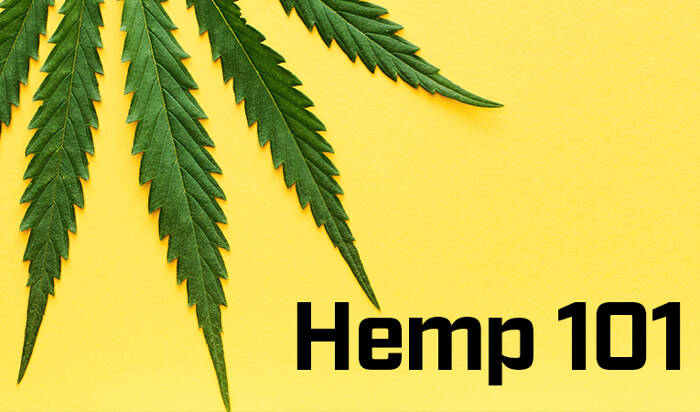Hemp 101: Understanding One Of Humanity’s Favorite Plants
So what is the difference between hemp and cannabis, exactly? Let’s break it down.
- Cannabis: The term ‘cannabis’ is used to refer to any plant member of the Cannabis family. Some botanical taxonomists argue Cannabis is a single species. Other researchers posit there are four different varieties of Cannabis plants: Cannabis sativa, Cannabis indica, Cannabis ruderalis, and Cannabis afghanica (or kafiristanica).
- Marijuana: The term ‘marijuana’ is sometimes colloquially used in lieu of ‘cannabis’. However the term is shifting out of use as it has origins in negative racial stereotypes.
- Hemp: Hemp is a type of Cannabis sativa plant that produces Cannabidiol (CBD) as its primary cannabinoid and contains little to no THC.
Cannabis plants produce over 400 distinct compounds. At least 100 of those compounds are called cannabinoids. The two most well-known cannabinoids are Tetrahydrocannabinol (THC) and Cannabidiol (CBD). THC is intoxicating, psychoactive and can get you “high.” CBD, however, is not euphoric and is non-intoxicating. It won’t get you high like THC but it may exert a calming effect on mood.
Hemp is fully federally legal thanks to the 2018 Farm Bill. Hemp plants are extremely versatile, and can be used for over 25,000 different applications.
- Cannabidiol (CBD): The primary cannabinoid produced by hemp plants. CBD is non-intoxicating and most likely will not get you “high” or stoned like THC. While CBD is not yet FDA-approved, research has shown CBD possesses a tremendous amount of therapeutic properties. These include the ability to act as an anti-inflammatory agent, as an anxiolytic (anti-anxiety), analgesic (painkiller), antipsychotic, antiepileptic and more.
- CBD can be extracted from several different Cannabis sativa varieties. You can find CBD present in Cannabis sativa plants which normally produce THC as their primary cannabinoid. CBD can also be extracted from hemp, which is a type of Cannabis sativa plant that contains little to no THC.
A History of Hemp: Through The Ages
Cannabis sativa is one of the oldest plants cultivated by man. Here’s a brief journey outlining how it spread across the world.
- 10000 BC: Fibers of Cannabis sativa are used to make pots in Taiwan. Archaeological evidence also points to this as a period where Cannabis sativa was used as a food in Japan.
- 5600 BC: Evidence of Cannabis sativa as a textile in China emerges
- 4000 BC: Researchers uncover the first evidence of hemp cultivation in China
- 2700 BC: Archaeological evidence indicates use of Cannabis sativa components for medicinal purposes in China
- 2000-1000 BC: The hearty Cannabis sativa plant spreads from Western Asia to China, Egypt and eventually Europe
- 350 BC–450 AD: Hemp and flax pollen is found in Norway. Researchers indicate Cannabis sativa was used for coarse textiles such as ropes and sailcloths.
- 1500-1700 AD: Cannabis sativa finds its way to Northern America. Reports on how this happened vary. Some claim it came with Christopher Columbus/Spaniards while others argue it spread from South America or Mexico.
- 1760s: Growing hemp spreads to the American colonies.
- 1830s: Irish physician William Brooke O’Shaughnessy studies cannabis’ medicinal properties in India. He returns to the colonies, “…with a hefty supply of cannabis, at which point medical marijuana became popular in England and the USA.”
- 1937: The Marijuana Tax Act places cannabis regulation under the Drug Enforcement Agency, criminalizing its possession.
- 20th century: Cannabis use becomes recreationally and medicinally popular
Legalizing Hemp & The Farm Bill
In 2014 The Agricultural Act passed in the Senate. This act helped to establish a framework for legal cultivation of industrial hemp without a permit from the DEA, known as “Hemp Pilot Programs.” Cultivators must register with the state’s pilot program in order to be eligible.
In 2018 a new Farm Bill was passed that federally legalized hemp and allowed for its cultivation. The bill also defines hemp as Cannabis sativa plants which contain less than 0.3% delta-9 THC by dry weight.
How Hemp And CBD Are Processed For Consumption
The ways in which hemp is harvested and processed depend on the intended use of the hemp in question.
Industrial hemp, for instance, uses hemp as a textile or fiber. The corresponding part of the plant that’s desired here are the stalk and stems. As such industrial hemp plants are harvested by specially designed equipment such as combine harvesters.
Medicinal hemp, however, is concerned with using the flowering head of the plant. This type of hemp is often hand-picked to ensure flowers are kept intact and resinous trichomes are not displaced due to poor handling.
Once hemp is harvested its fibrous components must be separated from the woody core. This can be achieved either through mechanical means (decortication) or through natural processes (retting).
The hemp is then dried out in a well-ventilated room to ensure there’s no presence of mold, bacteria or fungi. The dried out hemp can now be used to extract CBD. Extraction techniques used to pull CBD out of hemp plants includes supercritical CO2 extraction, ethanol extraction, hydrocarbon extraction and lipid extraction.
Hemp’s Bright Future
While hemp has been beloved by humans for thousands of years we’ve only recently begun to understand and fully utilize it. The passing of the Farm Bill has helped create a system in which advancements in hemp harvesting and CBD extraction are finally possible. It’s only a matter of time before we uncover even more ways on how to use this miraculous crop.







